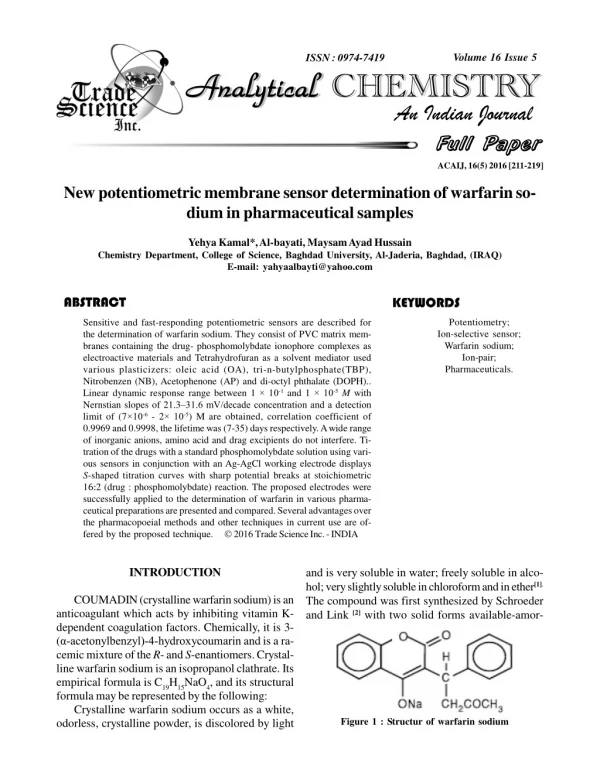New potentiometric membrane sensor determination of warfarin so- dium in pharmaceuticalsamples
Sensitive and fast-responding potentiometric sensors are described for the determination of warfarin sodium. They consist of PVC matrix mem- branes containing the drug- phosphomolybdate ionophore complexes as electroactive materials and Tetrahydrofuran as a solvent mediator used various plasticizers: oleic acid (OA), tri-n-butylphosphate(TBP), Nitrobenzen (NB), Acetophenone (AP) and di-octyl phthalate (DOPH).. Linear dynamic response range between 1 u00d7 10 -1 and 1 u00d7 10 -5 M with Nernstian slopes of 21.3u00f131.6 mV/decade concentration and a detection limit of (7u00d710 -6 - 2u00d7 10 -5) M are obtained, correlation coefficient of 0.9969 and 0.9998, the lifetime was (7-35) days respectively. Awide range of inorganic anions, amino acid and drag excipients do not interfere. Titration of the drugs with a standard phosphomolybdate solution using vari- ous sensors in conjunction with an Ag-AgCl working electrode displays S-shaped titration curves with sharp potential breaks at stoichiometric 16:2 (drug : phosphomolybdate) reaction. The proposed electrodes were successfully applied to the determination of warfarin in various pharma- ceutical preparations are presented and compared. Several advantages over the pharmacopoeial methods and other techniques in current use are offered by the proposed technique.
★
★
★
★
★
104 views • 9 slides
